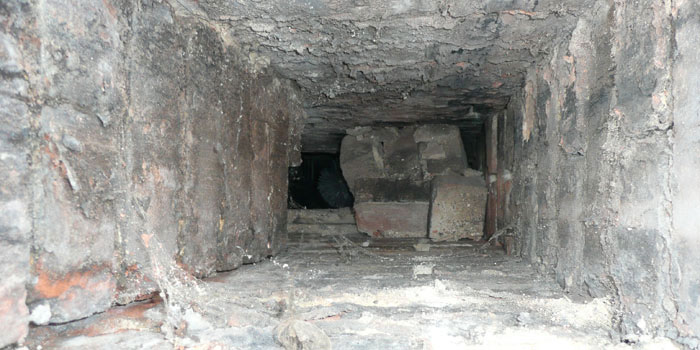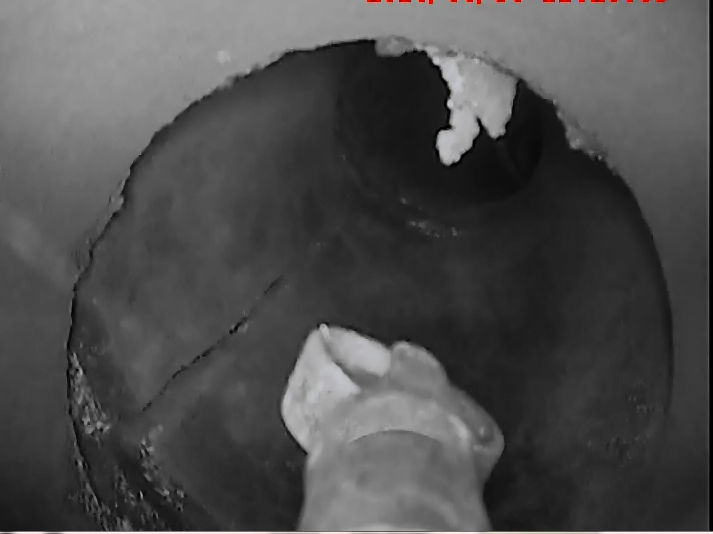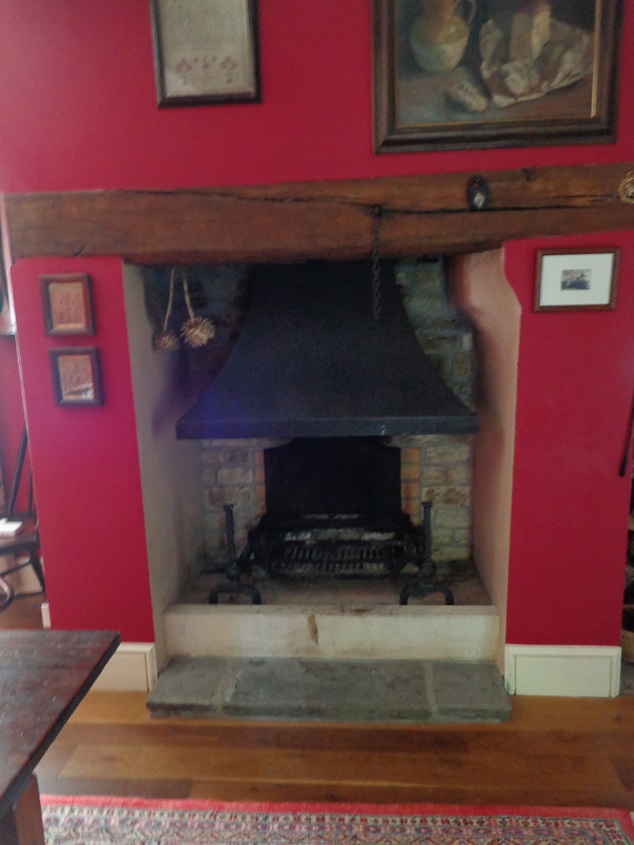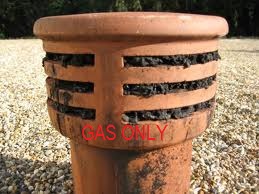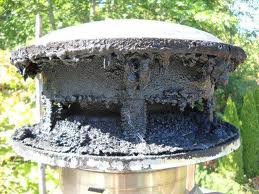The fire is not drawing properly.
Oh dear that`s not good.
In order of likelihood your problem could be:
1.Flue size reduced by lack of effective sweeping/burning wet wood
Lack of effective sweeping will soon restrict the flue, has your chimney been swept in the last year?
Did “the sweep” use professional rods and the correct grade and size of brush ?
If the answer is no then chances are a good sweeping will improve matters no end.
Coal-Sweep every three months in use
Smokeless-Sweep every year
Wood-sweep every three months in use
2.Partial blockage
Rubble dropped down the flue.
Poor workmanship.
Chicken wire stuffed in the pot.
A CCTV survey will quickly reveal the nature of a blockage.Here its bricks and a nest.
Birds nests are also a source of blockage more on these here
3.Breech in the flue wall
Caused by a ham fisted sweep using the wrong brush.
A cracked liner after a chimney fire.
A brick landed on the fire grate the result of natural wear and tear
4.Fireplace opening is too large.
Throughout the 18th and 19th century a smoky fireplace was a common cause of complaint the reason was a lack of understanding about the relationship between the size of opening and the size of flue, the flow of gases through a chimney flue is limited by is size and construction.
When the fireplace opening is too large then the flow increases and it needs a bigger draught at the same time the gases are cooled by the entering fresh air,the draught decreases and smoke eddies into the room.
Thankfully we now have a much greater understanding of this and your chimney sweep can calculate the maximum size of opening your flue can service.You can install a modern appliance in an older opening.
Or you could go for something a bit more retro.
Or even a modern wood burner that is designed to run with doors open or shut
Simply removing the fireplace insert to replicate the Georgian fire places is never a good idea, as early as 1797 the Georgians did away with this design in favour of the far more healthy restricted opening scaled to the size of flue.If you do have one of these fireplaces have you noticed that the temperture throughout your house drops by as much as 4-5 deg Celsius whenever the fire is lit?
4.Wrong/fouled terminal
Is your cowl one of the above? If so have it removed before using the fire again.
It takes specialist equipment to clean the inside of a cowl effectively.
Mesh size is specific to the fuel being burned the wrong mesh size can soon become fouled with tar.
5. Air starvation
All appliances for solid fuel need a lot of combustion air to function correctly,with a closed appliance 15 – 30 cubic meters of combustion per hour is necessary, a open fire can require up to 250 cubic meters of combustion air per hour, if there is not enough oxygen entering the room the result is incomplete combustion this shortage will lead to the carbon monoxide levels in the room rising rapidly.
With the increasing cost of heating we have become very adept at draught proofing our homes with better quality doors and windows, if you have had double glazing installed or your exterior vent has been covered then this can be detrimental to the safe operation of your fire but don`t be too hasty with alterations your chimney sweep can investigate and advise on ways of improving ventilation.
6.Only the first eight meters of flue has ever been swept.
DIY chimney rods and brush have only ten undersized rods and a undersized brush costing as little as £20.We carry over 20 brush`s and 50 rods of varying grades.Many part time sweeps only have a one size fits all brush and ten rods.Special rods are required for sweeping liners, using the wrong rods will wreck your liner.It is an all too frequent occurrence as we sweep past the eight meter point and the soot starts falling in vast quantities !





